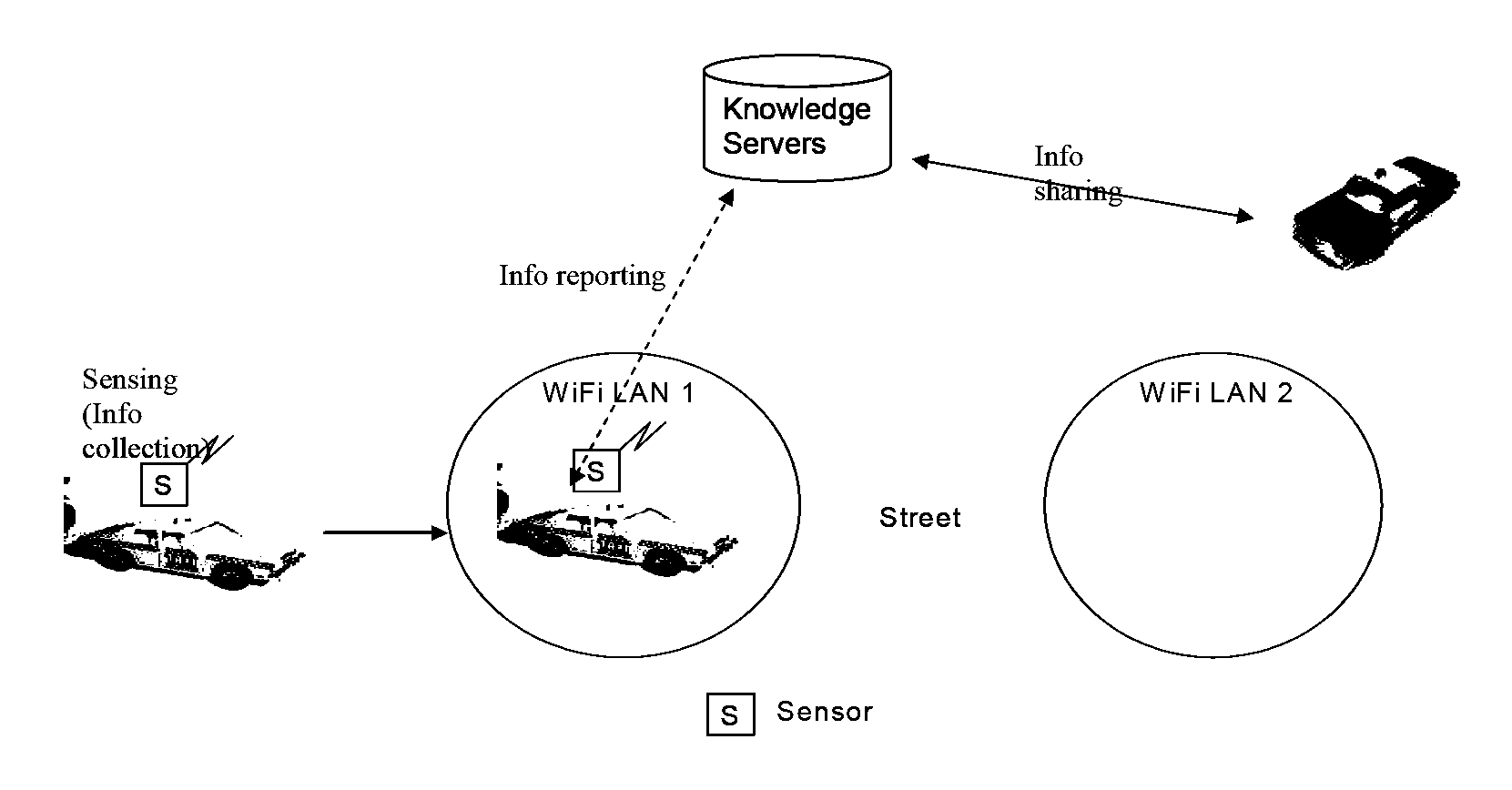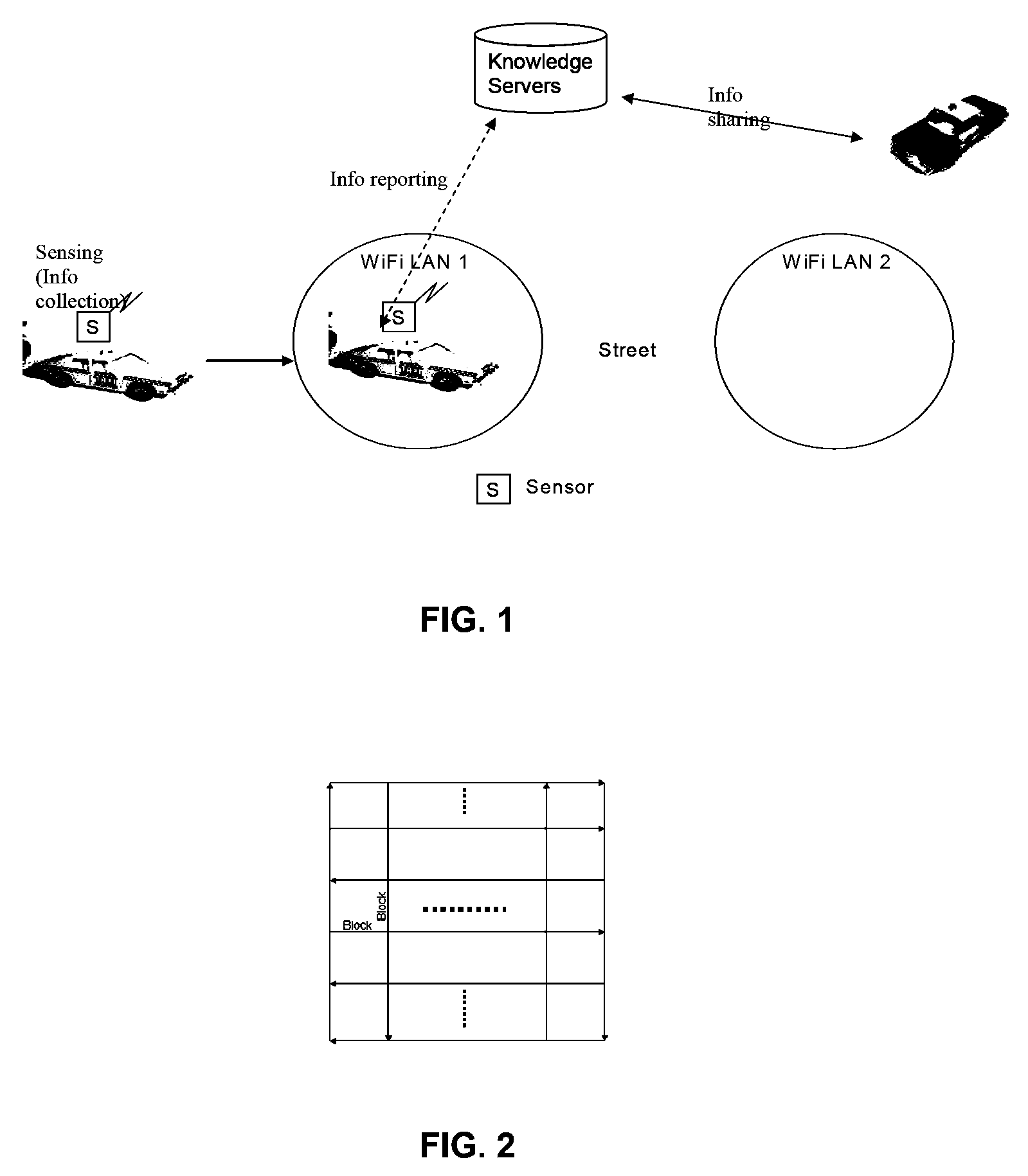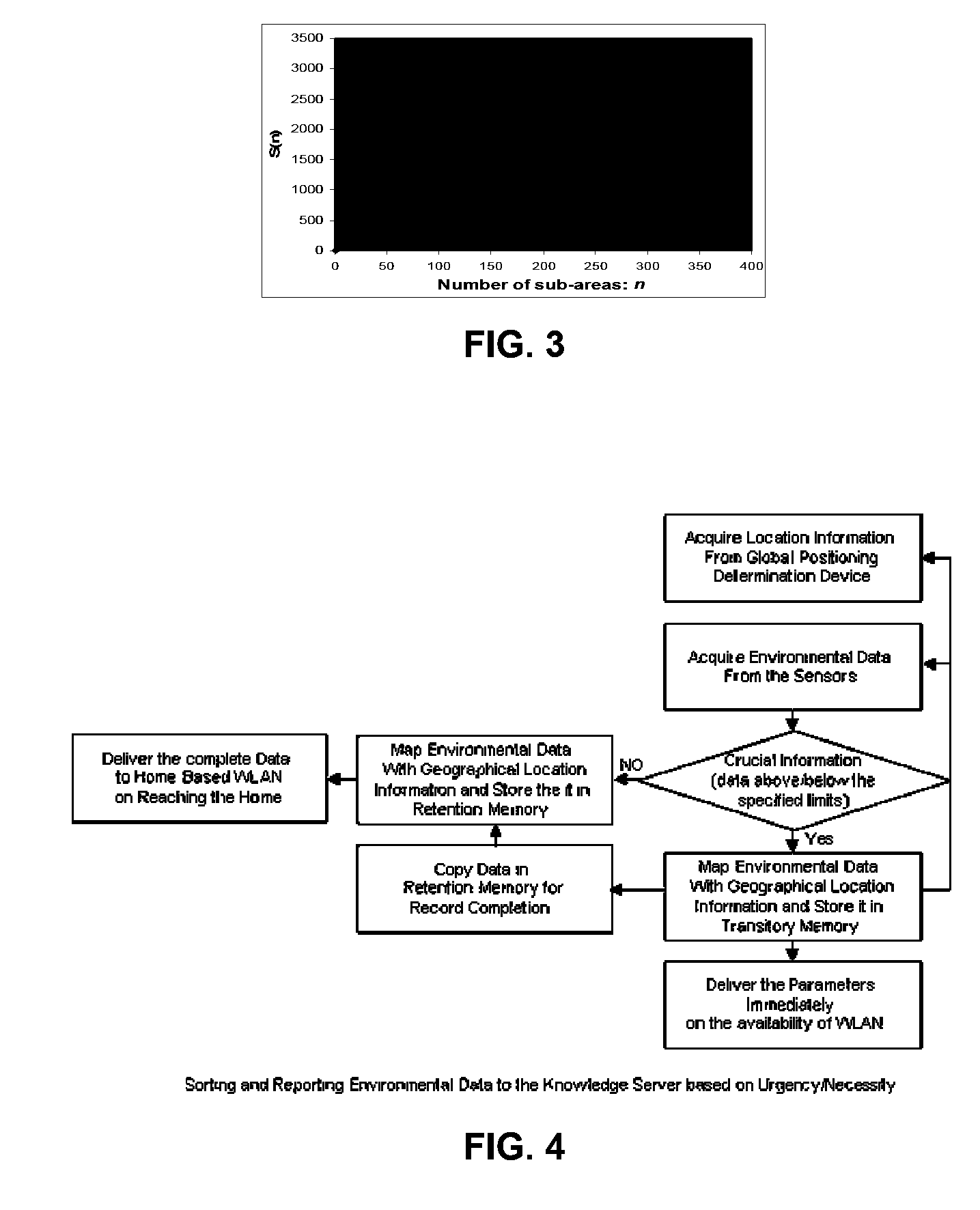Environmental monitoring using mobile devices and network information server
a network information server and mobile device technology, applied in the field of wireless networking, can solve the problems of large and complex network infrastructure, large number of fixed sensors, and prone to tampering of fixed sensors, so as to reduce the size and complexity of network infrastructure, reduce the number of sensors, and improve support
- Summary
- Abstract
- Description
- Claims
- Application Information
AI Technical Summary
Benefits of technology
Problems solved by technology
Method used
Image
Examples
Embodiment Construction
[0022] The preferred embodiments of the present invention fulfill the existing need as explained above, by providing systems and methods for environmental monitoring and detection by using mobile sensors to patrol an area of interest and relay collected data substantially in real time to a command center. According to one aspect of the present invention, mobile sensors are mounted on public vehicles (e.g., buses, taxis, police cars, trains, trucks) and are worn or carried by public personnel (e.g., policemen, fire fighters, mail carriers, emergency response personnel) to monitor the environment. A vehicle or person that carries a mobile sensor will be referred to as a Sensor Carrier. The mobile sensors or the Sensor Carriers can be equipped with geographical location determination devices (e.g., the Global Positioning System or GPS) so that they can map the environmental data collected to geographical locations.
[0023] The Mobile Sensor System (MSS) can co-exist with fixed sensors. ...
PUM
 Login to View More
Login to View More Abstract
Description
Claims
Application Information
 Login to View More
Login to View More - R&D
- Intellectual Property
- Life Sciences
- Materials
- Tech Scout
- Unparalleled Data Quality
- Higher Quality Content
- 60% Fewer Hallucinations
Browse by: Latest US Patents, China's latest patents, Technical Efficacy Thesaurus, Application Domain, Technology Topic, Popular Technical Reports.
© 2025 PatSnap. All rights reserved.Legal|Privacy policy|Modern Slavery Act Transparency Statement|Sitemap|About US| Contact US: help@patsnap.com



